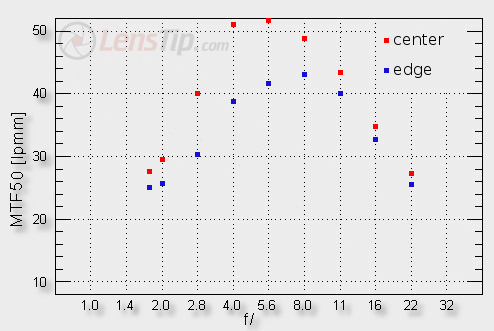 Originally posted by Culture
Originally posted by Culture 
I have always found the term stopping down a little bit out there. Now if I have a fast lens at 1.7. If I decide to stop down. It could be anything between 2 to 22.
When people use the word stop down and dont give a reference value its difficult to understand what they are talking about.
And it becomes even more confusing when someone says I made three stops down, or two stops down.
Here's an example (FA 31mm F1.9 Limited)
 Disclaimer
Disclaimer Some people have said that the FA 31mm LTD is very sharp wide open, so take this graph with a grain of salt. And do not use this graph to compare with any other graph.
You see how wide open, the measured resolution is low, but stopped down to F2.8, the resolution seems pretty good, and the at F5.6 the resolution is at it's max? So for this lens, stopping down to F5.6 is better than stopping down to F8. But practically anything between F2 and F16 is better than F1.9, so saying "stopped down is sharper" will remain true. The question is, are you asking for maximum sharpness, or acceptable sharpness.
Usually with really good lenses, it doesn't make too much of a difference. Shooting my Tamron 70-200 F2.8 wide open, it's already so sharp that I don't ever go to F4. If I want to really go sharp, then I just stop down to F8 and bang, razer sharp, and no CA.
That's another thing - shooting wider will allow for more chromatic aberrations. Same with vignetting.
And RioRico explained what F-stop means in terms of steps.


 Similar Threads
Similar Threads 













 Post #12 by demp10
Post #12 by demp10








